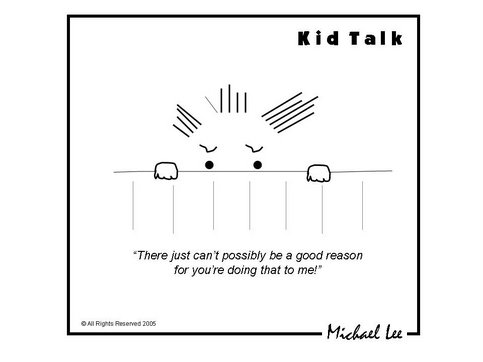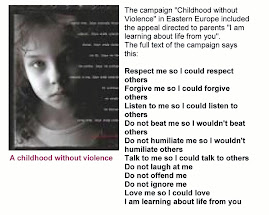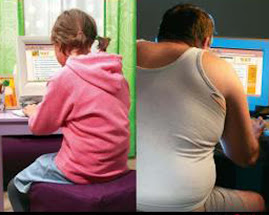

Wednesday, 11 April 2007
2007 02: Kathirasen on Sunday: The heart weeps but the mind is thankful
NST online. Columns. 25/02/07
By : Kathirasen
HOW could she? O my God! It’s horrible! These were among the exclamations that burst through the lips of relatives and friends last week.
They were agonising over the death of two children. Every death is tragic but this tragedy was made more unbearable by the news that their own mother was said to have strangled them.
And it came so soon after the case of a man who strangled his two children before committing suicide.
It is incomprehensible. Why would a mother want to kill her children? Why would a father snatch away the life that he helped bring into the world?
How could they do it? I’m sure when the mother strangled her sleeping children — one at a time — they must have awakened as they struggled for breath.
Their terrified eyes would have met her eyes. Perhaps, as the life was being squeezed out of them, they were trying to fathom the reason for their mother’s madness. Or perhaps the shock of it suffocated any attempt at thinking.
And what was passing in the mind of the mother? Only days earlier, on Feb 14, jobless Lee Thian Sing strangled May Shan, 10, and Wei Shen, 9, before taking his own life by drinking bleach and washing liquid.
It happened in the daytime. They would have been awake as he murdered them. Did they struggle? Did their bodies convulse in contortions as they writhed in agonising disbelief? What terrified thoughts tumbled through their innocent minds as the hands that had comforted them were now wringing the life out of them? Lee left a note saying he did it because he did not want his children ending up as failures like him.
His moment of madness is believed to have come about shortly after a tiff with his wife.
On Feb 22, labourer M. Murthy, 29, was charged at the Klang magistrate’s court with murdering his two-year-old son Ruthren in January. The child is said to have been beaten and kicked to death.
On Dec 1 last year, Seah Wong Chong and Kau Mei Lin fed rat poison to their children Siew Cheung, 12, Siew Man, 10, and Siew Tong.
The children died but the couple was reported to have failed in their attempt to take their own lives. They said harassment by loan sharks drove them to it.
Last July, K. Sangeetha, 30, collected her four children and stood in front of a Singapore-bound express train. Her eldest daughter, Victoria, 8, managed to wriggle free and run, taking her five-year-old brother Jason with her. But Sangeetha and daughters Sagaria and Esther were killed.
Killing of a child by a parent. It’s called filicide.
Cases such as that involving Lee are classified by psychiatrists as "altruistic filicide" because the parent thinks he is actually saving his children from real or imagined suffering by killing them.
Studies in the West show that the majority of filicide-suicides are "altruistic".
It was reported that the mother who allegedly killed her two children in Penang did so because she was angry with her husband for wanting to take a second wife. Psychiatrists call this "spouse revenge filicide". It’s an old theme.
Those who have read about Jason and his quest for the Golden Fleece would be familiar with queen Medea. When Jason abandoned her for a princess, she killed their two children to spite him.
Martha Ann Johnson of the United States, who wanted to get at her husband after an argument, rolled all 250 pounds (114kg) of her weight on her daughter while she slept. Johnson was convicted of killing her daughter on Feb 21, 1982.
What triggers the horrendous act? What makes such parents snap? Psychiatrists usually blame it on stress and pressure. Behavioural scientists hold that violent behaviour has no single cause but is the result of an accumulation of factors, including childhood experiences.
Neuroscientists may conclude that a breakdown in communication between the limbic system of the brain and the frontal cortex could have caused emotional information to be incorrectly processed. Or they might point to a possible malfunction of the amygdala, that tiny almond-shaped mass of grey matter where fear and aggression arise.
It may be that even the perpetrators of this atrocity would be unable to say what drove them to this instant of insanity.
What is clear is that we who hear about it are shocked. We are horrified. And that, I think, is good.
Because it means that such incidences are rare; because if they were an everyday affair or even a frequent occurrence, our hearts would have become numb to them. We would not be shocked.
When I see that for every mother who suffocates her child, for every father who kills his child, there are millions more who don’t, my faith in parents is restored. The vast majority take reasonable care of their children; many shower love and affection.
While my heart weeps for the children who were killed, my mind is thankful that these are but instances of aberrant behaviour.
Children belong in families, which, ideally, serve as a sanctuary and a cushion from the world at large. Parents belong to society and are a part of that greater world. Sometimes parents are a channel to the larger society, sometimes they are a shield from it. Ideally they act as filters, guiding their children and teaching them to avoid the tempting trash. — Louise Hart
Children: From my property to walking divinity
FILICIDE. It is a new word for most of us. What can we do to reduce its occurrence? How do we prevent this murder most foul, as the Bard would term it? The easiest answer is to have more or tighter laws. But I don’t think legislation is the way. Despite legislation, crime is on the rise. Despite legislation, corruption continues. Despite legislation, drug addiction drags on.
Counselling might help. But you can’t offer counselling unless you know who is likely to commit filicide or who suffers from psychosocial problems grave enough to trigger such an atrocity.
Perhaps we could have more counsellors — or groups such as the Befrienders — easily available to anyone in distress or who needs to talk. A sympathetic ear is known to buy time for reflection and therefore cut the chances of the caller committing acts such as suicide.
Anger management would help. Perhaps this should be taught in school and universities. Anger is one of the major triggers of filicide and the cause of a million other flights of idiocy that man is slave to. The influential Greek philosopher Plutarch says: "We get angry with enemies and friends, with children and parents, and even with gods and animals and inanimate objects."
It isn’t easy, but each of us has to learn to temper our temper. Studies indicate that yoga not only contributes to one’s physical well-being but also sharpens one’s mental faculties. It helps bring about a balance. And balance is what all of us need. Perhaps yoga could be introduced in schools.
Perhaps too, people should learn to be resourceful. A resourceful person is less likely to take his life or that of his children when faced with problems. And yes, leading a less stressful life would certainly help. Amid our busyness, we should take time out to, as the old saying goes, "stand and stare". We should spend a little more time tending to the garden or being with trees and plants. They are a wonderful tonic. Trust me.But more than that, I think, there is a need for a fundamental change in the way we view our children. Parents should realise that children are not their property; that they can’t abuse them or use them or kill them just because they helped bring them to life.
Children are gifts. They should be cared for and nurtured, not tortured. Parents grow more mature as they nurture their children. It is two-way traffic.
Parents should realise that children are walking temples. Just as we would not desecrate a temple, church or mosque, we should not abuse these walking, talking temples which house the divine. We are all walking divinities who should rejoice in the celebration that is life.
By : Kathirasen
HOW could she? O my God! It’s horrible! These were among the exclamations that burst through the lips of relatives and friends last week.
They were agonising over the death of two children. Every death is tragic but this tragedy was made more unbearable by the news that their own mother was said to have strangled them.
And it came so soon after the case of a man who strangled his two children before committing suicide.
It is incomprehensible. Why would a mother want to kill her children? Why would a father snatch away the life that he helped bring into the world?
How could they do it? I’m sure when the mother strangled her sleeping children — one at a time — they must have awakened as they struggled for breath.
Their terrified eyes would have met her eyes. Perhaps, as the life was being squeezed out of them, they were trying to fathom the reason for their mother’s madness. Or perhaps the shock of it suffocated any attempt at thinking.
And what was passing in the mind of the mother? Only days earlier, on Feb 14, jobless Lee Thian Sing strangled May Shan, 10, and Wei Shen, 9, before taking his own life by drinking bleach and washing liquid.
It happened in the daytime. They would have been awake as he murdered them. Did they struggle? Did their bodies convulse in contortions as they writhed in agonising disbelief? What terrified thoughts tumbled through their innocent minds as the hands that had comforted them were now wringing the life out of them? Lee left a note saying he did it because he did not want his children ending up as failures like him.
His moment of madness is believed to have come about shortly after a tiff with his wife.
On Feb 22, labourer M. Murthy, 29, was charged at the Klang magistrate’s court with murdering his two-year-old son Ruthren in January. The child is said to have been beaten and kicked to death.
On Dec 1 last year, Seah Wong Chong and Kau Mei Lin fed rat poison to their children Siew Cheung, 12, Siew Man, 10, and Siew Tong.
The children died but the couple was reported to have failed in their attempt to take their own lives. They said harassment by loan sharks drove them to it.
Last July, K. Sangeetha, 30, collected her four children and stood in front of a Singapore-bound express train. Her eldest daughter, Victoria, 8, managed to wriggle free and run, taking her five-year-old brother Jason with her. But Sangeetha and daughters Sagaria and Esther were killed.
Killing of a child by a parent. It’s called filicide.
Cases such as that involving Lee are classified by psychiatrists as "altruistic filicide" because the parent thinks he is actually saving his children from real or imagined suffering by killing them.
Studies in the West show that the majority of filicide-suicides are "altruistic".
It was reported that the mother who allegedly killed her two children in Penang did so because she was angry with her husband for wanting to take a second wife. Psychiatrists call this "spouse revenge filicide". It’s an old theme.
Those who have read about Jason and his quest for the Golden Fleece would be familiar with queen Medea. When Jason abandoned her for a princess, she killed their two children to spite him.
Martha Ann Johnson of the United States, who wanted to get at her husband after an argument, rolled all 250 pounds (114kg) of her weight on her daughter while she slept. Johnson was convicted of killing her daughter on Feb 21, 1982.
What triggers the horrendous act? What makes such parents snap? Psychiatrists usually blame it on stress and pressure. Behavioural scientists hold that violent behaviour has no single cause but is the result of an accumulation of factors, including childhood experiences.
Neuroscientists may conclude that a breakdown in communication between the limbic system of the brain and the frontal cortex could have caused emotional information to be incorrectly processed. Or they might point to a possible malfunction of the amygdala, that tiny almond-shaped mass of grey matter where fear and aggression arise.
It may be that even the perpetrators of this atrocity would be unable to say what drove them to this instant of insanity.
What is clear is that we who hear about it are shocked. We are horrified. And that, I think, is good.
Because it means that such incidences are rare; because if they were an everyday affair or even a frequent occurrence, our hearts would have become numb to them. We would not be shocked.
When I see that for every mother who suffocates her child, for every father who kills his child, there are millions more who don’t, my faith in parents is restored. The vast majority take reasonable care of their children; many shower love and affection.
While my heart weeps for the children who were killed, my mind is thankful that these are but instances of aberrant behaviour.
Children belong in families, which, ideally, serve as a sanctuary and a cushion from the world at large. Parents belong to society and are a part of that greater world. Sometimes parents are a channel to the larger society, sometimes they are a shield from it. Ideally they act as filters, guiding their children and teaching them to avoid the tempting trash. — Louise Hart
Children: From my property to walking divinity
FILICIDE. It is a new word for most of us. What can we do to reduce its occurrence? How do we prevent this murder most foul, as the Bard would term it? The easiest answer is to have more or tighter laws. But I don’t think legislation is the way. Despite legislation, crime is on the rise. Despite legislation, corruption continues. Despite legislation, drug addiction drags on.
Counselling might help. But you can’t offer counselling unless you know who is likely to commit filicide or who suffers from psychosocial problems grave enough to trigger such an atrocity.
Perhaps we could have more counsellors — or groups such as the Befrienders — easily available to anyone in distress or who needs to talk. A sympathetic ear is known to buy time for reflection and therefore cut the chances of the caller committing acts such as suicide.
Anger management would help. Perhaps this should be taught in school and universities. Anger is one of the major triggers of filicide and the cause of a million other flights of idiocy that man is slave to. The influential Greek philosopher Plutarch says: "We get angry with enemies and friends, with children and parents, and even with gods and animals and inanimate objects."
It isn’t easy, but each of us has to learn to temper our temper. Studies indicate that yoga not only contributes to one’s physical well-being but also sharpens one’s mental faculties. It helps bring about a balance. And balance is what all of us need. Perhaps yoga could be introduced in schools.
Perhaps too, people should learn to be resourceful. A resourceful person is less likely to take his life or that of his children when faced with problems. And yes, leading a less stressful life would certainly help. Amid our busyness, we should take time out to, as the old saying goes, "stand and stare". We should spend a little more time tending to the garden or being with trees and plants. They are a wonderful tonic. Trust me.But more than that, I think, there is a need for a fundamental change in the way we view our children. Parents should realise that children are not their property; that they can’t abuse them or use them or kill them just because they helped bring them to life.
Children are gifts. They should be cared for and nurtured, not tortured. Parents grow more mature as they nurture their children. It is two-way traffic.
Parents should realise that children are walking temples. Just as we would not desecrate a temple, church or mosque, we should not abuse these walking, talking temples which house the divine. We are all walking divinities who should rejoice in the celebration that is life.
Subscribe to:
Post Comments (Atom)



No comments:
Post a Comment